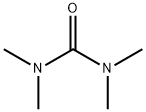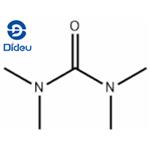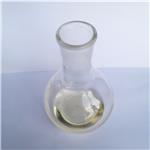Chemical Properties
Tetramethylurea is a clear colorless to pale yellow liquid with mild aromatic odor that is miscible with water and many organic solvents. Unusual for an urea is the liquid state of tetramethylurea in a range of > 170 °C.
Uses
Tetramethylurea is used as a solvent in dyestuff industries, in condensation reaction and intermediates in surfactant. It is utilized for base catalyzed isomerization and alkylation hydrocyanation due to its low permittivity. It reacts with oxalyl chloride to prepare tetramethyl chloroformamidinium chloride, which is used for the conversion of carboxylic acids and dialkyl phosphates to anhydrides and pyrophosphates respectively.
Definition
ChEBI: 1,1,3,3-tetramethylurea is a member of the class of ureas that is urea substituted by methyl groups at positions 1, 1, 3 and 3 respectively. Metabolite observed in cancer metabolism. It has a role as a human metabolite.
Preparation
The reaction of dimethylamine with phosgene in the presence of e. g. 50 % sodium hydroxide solution and subsequent extraction with 1,2-dichloroethane yields tetramethylurea in 95% yield.
Safety Profile
Moderately toxic by ingestion and intravenous routes. An experimental teratogen. Experimental reproductive effects. Human mutation data reported. Combustible when exposed to heat, flame, and oxidizers. To fight fire, use foam, mist, spray, dry chemicals. When heated to decomposition it emits toxic fumes of NOx.
Purification Methods
Dry it over BaO and distil it under nitrogen. It denatures proteins in H2O. [Elbaum & Herskovits Biochemistry 13 1268 1974, Kane Anal Biochem 53 350 1973, Beilstein 4 IV 225.]
Toxics Screening Level
The initial threshold screening level (ITSL) for tetramethylurea is 0.8 μg/m3 based on an annual averaging time and 230 μg/m3 based on a 24-hour averaging time.








